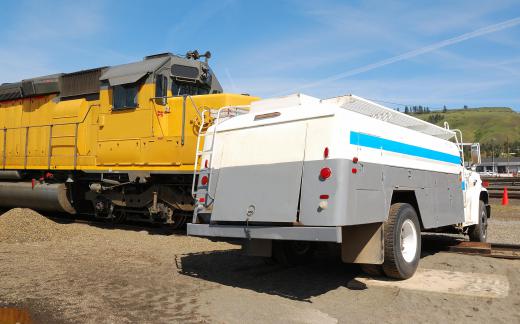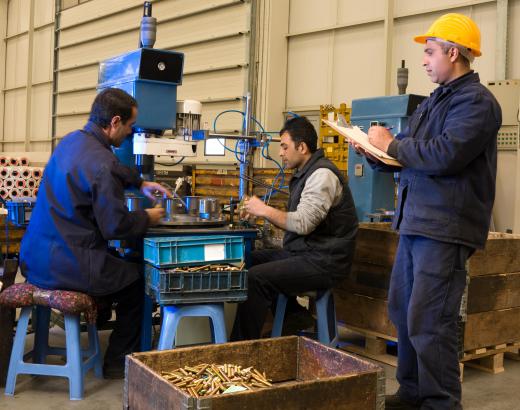Machine fault diagnosis is a procedure used to determine the root cause of equipment failure. When complex machinery fails, replacing the component involved might not be enough, because this may not address the underlying reason for the problem. Instead, a full machine fault diagnosis provides information about precisely what happened and how to address it, preventing similar failures in the future. This is a branch of mechanical engineering, the study of designing, building, and maintaining machines for activities ranging from medical imaging to industrial production.
A number of tools are available for a technician to use in machine fault diagnosis. Technicians may be able to access a computer control panel to collect data about performance. They can also monitor vibration and other characteristics while equipment is in operation, analyze components and lubricants from the machine, and use thermal analysis to look for hot spots. These tools can allow for the collection of a variety of pieces of information that may help explain a fault.

In the course of a machine fault diagnosis, the technician should be able to identify what is going wrong, if this wasn’t uncovered before. In one example, a seal might not be tight, leading to leakage inside the equipment. The root cause might be normal wear and tear, with the seal at the end of its natural life. It could also be the result of poor installation, migration of another part that rubs against the seal, or another problem inside the equipment. To fix the problem, the technician needs to repair the original cause, not just replace the seal.

Ongoing machine fault diagnosis can be used to monitor systems in operation for signs of problems. Some equipment takes advantage of neural networks and other smart technology. A computer can, for example, collect data on vibration while a machine is in operation to find the normal range, and to determine different levels associated with various functions. If the computer notices that a machine is vibrating too much, it can issue a warning, alerting technicians to a problem. It may be able to offer diagnostic advice and information to help the technician fix the equipment.

Repair and maintenance can both benefit from machine fault diagnosis, and engineers also use such studies to learn how to improve products. In addition, this can be a valuable forensic tool. After an incident involving faulty equipment, an engineer can perform an analysis to find out what happened. This information could contribute to changes like better design, different maintenance schedules, or new protocols. If the problem was the result of negligence or bad construction, the diagnosis may also establish legal liability and could support a lawsuit.
Ever since she began contributing to the site several years ago, Mary has embraced the exciting challenge of being a About Mechanics researcher and writer. Mary has a liberal arts degree from Goddard College and spends her free time reading, cooking, and exploring the great outdoors.

